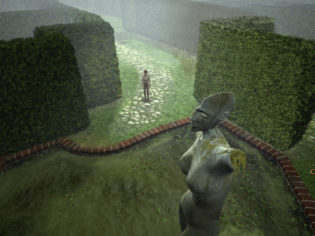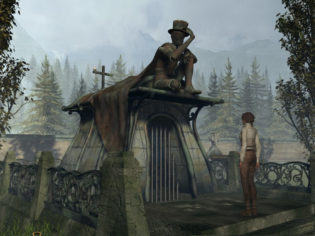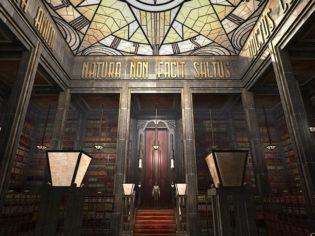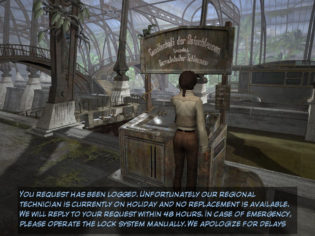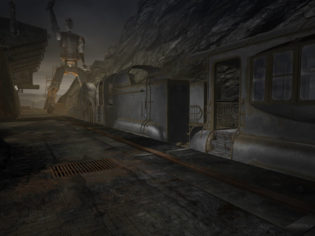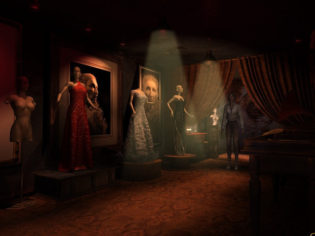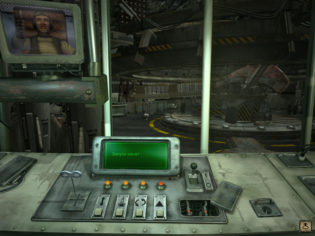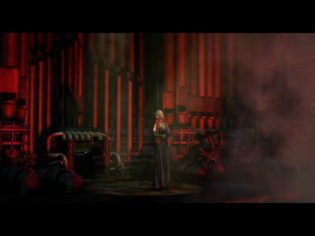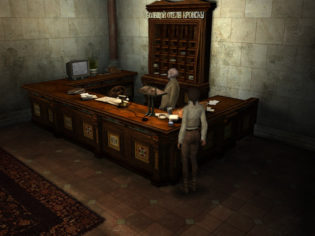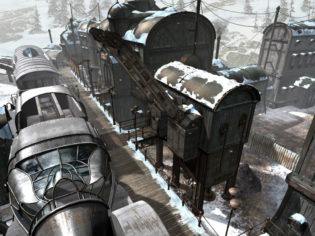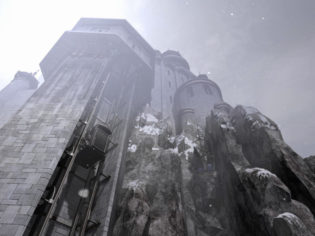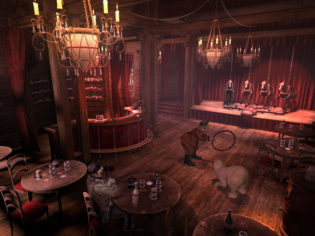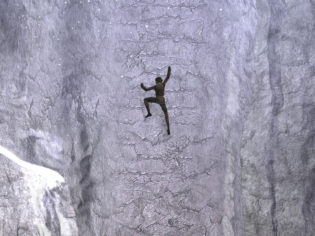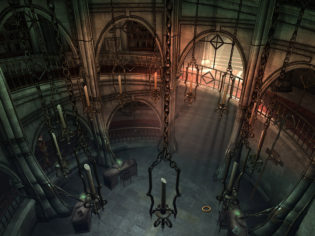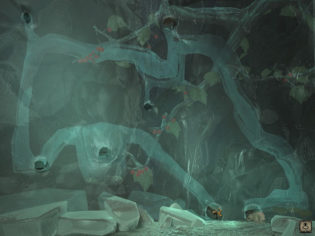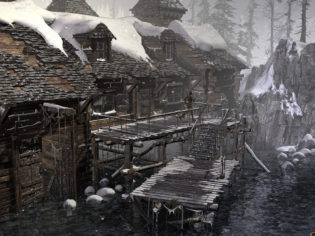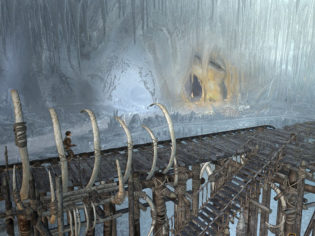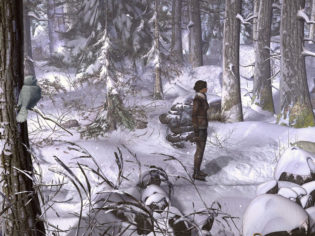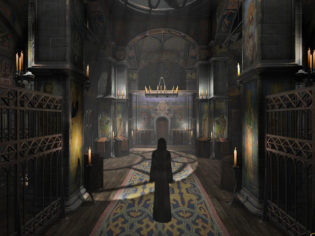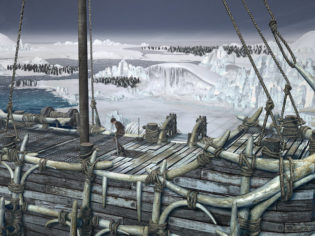O tempora is a series of retrospective posts where I play games from ages before to see if they stood the test of time.
Twenty years ago in 2002 when Syberia was released, the point and click adventures were on a decline. It wasn’t like the genre didn’t have any recent fantastic examples, The Longest Journey being from a few years before. But otherwise, it felt as if nobody really knew at the time what to do with the genre and how to approach it. And to be absolutely frank, Syberia itself oftentimes felt like it didn’t really know how to approach the genre either, yet it so elegantly stumbled through its beautiful locations with its wonderful magic realist story that it pretty soon became a critical darling at least in some circles. And also started a short, but pretty decent run of adventure titles made by Microïds that ended around the time of the Sinking Island.
While I have played both Syberia and its sequel when they were new, and did enjoy them (the original more than the second game), I haven’t replayed them ever since until now.
It was very strange to replay Syberia, having surprisingly good memory of what happens in the game despite not seeing it for almost 20 years. Visually the game remains very memorable, mixing “clockpunk” and art nouveau elements in novel ways while exploring fictional parts of the world that have been seemingly stuck in time, intentionally contrasting the mundane world. And as memorable is the simple yet effective story of Kate Walker switching from being a white collar worker who is on a mission to get the contract signed into an adventurer who is genuinely enjoying the situations she gets in and problems she gets to solve.
But what was even more strange is being reminded how bizarre its approach to the gameplay of a point and click adventure with third person perspective and fixed camera angles was. You get screens upon screens of nothing but beautiful vistas and many a location with just one gameplay action, which is pretty uncommon even for the more Myst-like first person view titles of the genre. The game so heavily underutilizes its point and click-ness, in fact, that it could easily be turned into a modern style adventure game with direct control, as you never have to click on something far away to hear a descriptive comment, which is the most common use for this type of a game. And due to this, the game does feel like if Myst was a guided experience, instead of being “just do stuff and guess what’s going on”, in a very positive way.
That said, this approach does make some sections frustrating too. If you’re suddenly stuck because you missed an important detail or try to approach a problem that the game will simply not let you approach yet, you can find yourself running around these beautiful locations and getting tired at watching these empty screens time after time, expecting that you might be missing something. Because sometimes you just might miss a thing, as there are a few moments in the game where somewhere among lots of empty but pretty screens there’s a non obvious interactive point that you didn’t notice and this game was from the times before interactive zone highlighting became a thing. This, mixed with the at times annoyingly linear path to solutions, can lead to some frustrations, even though otherwise I do feel that Syberia has a nice flow to it and as long as you don’t take long pauses between play sessions, it gently guides you from point of importance to another.
Also, it was kinda funny to re-experience, in such a story-driven title, the more classic approach to adventure game protagonist logic. Since, while you are often expected to ask Kate do things a human being would do in a situation, almost from the start she’s ready and willing to climb to the roof of a building or restart factory machinery without asking anyone for permission and with no clear goal for this established. Just push the lever and see what happens.
Syberia is still a wonderful game to play today, though. And despite my fears I had an even better experience replaying it than what I remember my first playthrough of the game was like.
Unlike the situation with the original game, I couldn’t remember my original playthrough of Syberia II apart from the first location and the ending. And the fact that I didn’t like it as much. And upon replaying it now, I can totally understand why. It’s a messy and frustrating sequel.
It starts decently and as a direct continuation of the story from the first game you would expect to be. Although even there questionable things start appearing. Why is the tone with Kate’s ex-boss suddenly completely different? Why did we drop all connections to Kate’s past, but this one and one call from her mom that adds nothing to the narrative? Why even keep any of this if it no longer serves the story or Kate’s character development?
But still, you start the game enjoying minor but welcome improvements to the UI, with clear directions to scene transitions and dialogue topics that are no longer repeatable and thus it’s always clear what you haven’t talked about. Even Oscar can now ask for things remotely via the phone, so you’d expect less pointless back and forth. And you’d be wrong, but that realization comes later. There are more dialogues and more character-driven adventuring, but it all still feels like it could be a train stop from Syberia 1.
Then everything goes downhill. Puzzles start making less and less sense, becoming completely obnoxious and unfun by the end. Locations get more and more convoluted for no reason, with one of the ending locations having dozens of screens with just pretty visuals, except for several screens where you have to pixel hunt for key objects that are not emphasized in any way. And the story just dies. We get pointless villains, in the most traditional and dumb sense. There’s a completely unnecessary returning character from the first game that appears out of nowhere and is then never mentioned again. And probably most importantly, none of this feels necessary or up to the level of the original game that didn’t really need a continuation in the first place. The only meaningful part of this game is the ending, but there are 5+ hours of pointless crap before you get to that.
Syberia didn’t need to become a franchise, but it could. It’s just that Syberia 2 isn’t a good sequel nor a good adventure game. It’s pretty, it has some good tunes. But where the original game also had a genuinely good flow and unique feel to it, the sequel feels like a generic early 00s adventure game. At its best its unnecessary, at its worst its frustrating. So I would advise against playing the sequel and just stick to the original game.



